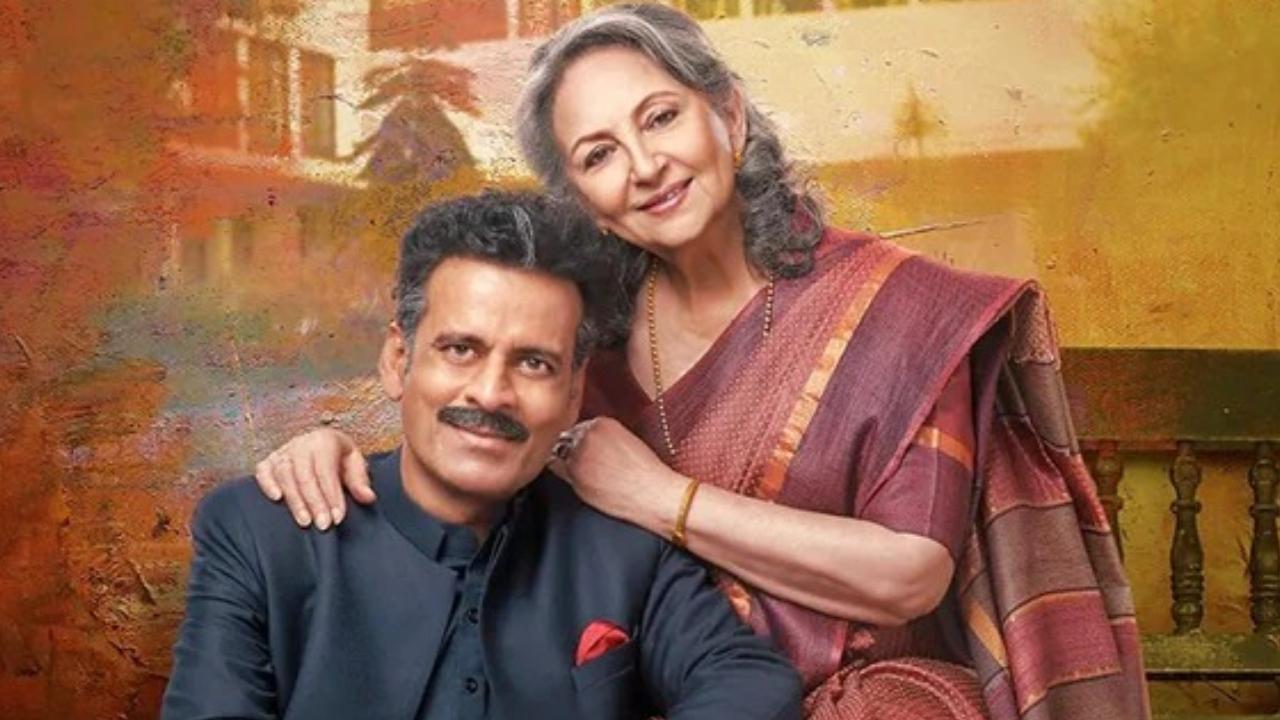Home / Entertainment / Bollywood News / Article /
'Gulmohar' movie review: A moving feast!
Updated On: 03 March, 2023 09:17 PM IST | Mumbai | Mayank Shekhar
Gulmohar has aptly premiered on a popular OTT platform, waiting for your Sunday. Just press play, you don’t even have to go for it
Listen to this article :

Manoj Bajpayee and Sharmila Tagore in a still from `Gulmohar`
Movie name: Gulmohar
On: Disney+ Hotstar
Director: Rahul V Chittella
Actors: Manoj Bajpayee, Sharmila Tagore
Rating: 3/5
I love the fact that this film pretty much begins with a song, set in a large living room, with several guests, feasting over drinks, while a live-singer (Talat Aziz, as a family friend) plays the music.
Everyone joins in, impromptu-karaoke, or breaks into a gentle dance. This is a song genre as old as the star-system in Bollywood. And you could make a full playlist of tracks with the same setting/purpose, with your favourite on top.



